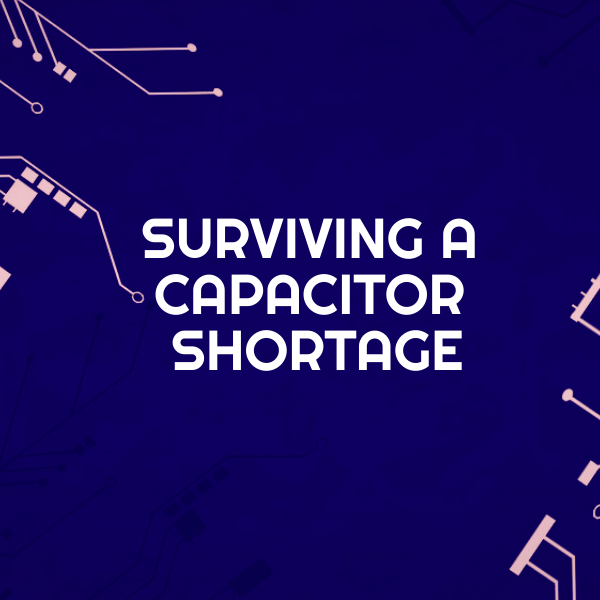By Ruth Seeley
Oh, for the good old days just after the turn of the century (2001), when the capacitor shortage from the peak of the Dotcom boom was easing. Component double-booking and multi-year strategic supply agreements signed to stabilize prices and ensure predictable delivery meant the capacitor shortages of the year before were old news. Prices fell by more than 60% and suppliers reduced lead times from six months to six weeks or less.
But then there was another capacitor shortage in 2008.
The reason this keeps happening is twofold. Naturally, it’s all about supply and demand. The single biggest factor impacting supply is pricing. While production has doubled, market value has remained the same, and without the possibility of increased profits, manufacturers don’t have the incentive to increase supply. Meanwhile, entire production lines of capacity are being allocated by manufacturers to their largest customers. While some manufacturers are increasing production and raising prices, this doesn’t happen overnight. Rather, it is a process that can take up to a year.

Driving the shortage is increased consumer demand in the smartphone, portable computing and automotive sectors and the design technologies involved. Internal combustion engines use about 1,000 to 2,000
multilayer ceramic chip capacitors (MLCCs,) while new electric and autonomous vehicles may use as many as 22,000. The iPhone X uses twice as many MLCCs as the iPhone 6s.
Market demand for MLCCs began to exceed supply in late 2017, but the great capacitor shortage of 2018 was initially masked by high inventory levels that lulled OEMs into a false sense of security – until they started placing orders only to find them often back ordered not once, but twice. Lead times by fourth-quarter 2018 were as high as 40 to 60 weeks for MLCCs and aren’t expected to ease for at least another year – perhaps not even for another five.
So, how can OEMs cope?
Here are some suggestions.
If a minor redesign is a possibility, using two lower-value capacitors in parallel could work, as could using a larger and more available package size with greater capacitance.
A more major redesign, using a different type of capacitor – tantalum or aluminum polymer or SMD film chip rather than MLCC – can also be viable, although developers will have to take voltage rating, resonance frequency and size, capacitance, equivalence series resistance (ESR) and leakage current into account when redesigning.
Perhaps the single biggest step OEMs can take to avoid capacitor supply shortage is to increase cooperation and communication between procurement and design departments. If designers consult with procurement before designs are complete, there will be more time to identify alternatives for parts in short supply and modify designs if necessary.
Limiting exposure to high capacity ceramics, especially in areas where competition is limited, with alternate reference designs is a strategy for consumer AV, lighting, power supply, industrial and some traditional (internal combustion engine) automotive lines.
Trade organizations such as the European Passive Component Institute (EPCI) and manufacturers like Panasonic and Kemet are providing white papers and guides to capacitor substitution that can help with design modification. Other tips for dealing with a shortage include placing orders early and avoiding the grey market. Product failures and re-work costs won’t help any OEM’s ultimate bottom line or reputation. Capacitor consumers who stockpiled tantalum capacitors in 2017 and 2018 and are willing to work on design workarounds to allow them to use tantalum rather than ceramic capacitors may be in the best possible position to withstand ongoing MLCC shortages.
About the Author:
Ruth Seeley writes from Ottawa about technology, the book and cannabis businesses, and the politics of food production.

